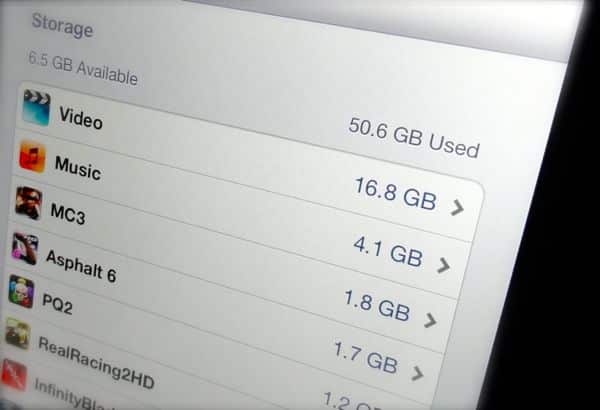Not quite sure how big a gigabyte (a.k.a, gig or GB) is? And just what is a gigabyte, for that matter? You’re not alone.
Let’s tackle the basics first.
A gigabyte is a unit of digital storage—proportionally similar to, say, a gallon of gas in your car, or a cup of rice in the kitchen.
OK, but how much stuff fits in a single gigabyte/GB? A few examples include:
- A 90-minute, standard-definition movie on iTunes, or
- A pair of 45-minute TV episodes (again, in standard-def, not HD), or
- About 200 songs,
- About 250 pictures (from a 10-megapixel camera),
- Or about 500 e-books (assuming they’re an average of 2 MB each)
In other words, you could theoretically fill a 16 GB iPhone with more than 3,000 songs—or 8,000 Kindle e-books, or a season and a half of “The Good Wife” in SD.
Keep in mind, of course, that episodes of “The Good Wife” won’t be the only thing saved in your smartphone’s memory. Most likely, you’ll have a potpourri of photos, videos, music, apps, email messages, contacts, and other items, not to mention your phone’s operating system. Add all those digital goodies together, and you may end up filling your phone’s storage more quickly than you’d think.
So, if a gigabyte is a hefty unit of digital storage, what’s the very smallest unit of data?
Meet the humble bit—a simple “0″ or “1,” open or shut, yes or no.
If you were to ask me, for example, “Is your name Ted?”, then my answer—”no”—would give you (literally) a single bit of information about my name.
Alright, got your calculator ready?
Take eight of those zero-or-one, yes-or-no “bits,” put ‘em together, and you get a single byte—a unit of data that’s considerably more complex than a bit, yet still a mere speck in the grand scheme of digital storage.
Now, put about 1,000 (or 1,024, to be precise) bytes together, and you get a kilobyte, commonly abbreviated as “KB.”
How big is a kilobyte?
Consider this: it takes about 20 kilobytes/KBs of memory to store a single, text-only email message.
Next, take 1,000 kilobytes, toss ‘em in a bucket, and you end up with a megabyte (MB)—and now we’re finally getting somewhere.
With a single megabyte of memory, you can store about three average-size webpages—or one quarter of a your average, ten-megapixel digital photo. A typical song from iTunes, meanwhile, weighs in at about five MB, while the Facebook app for iPhone takes about 10 MB of storage.
Last but not least, grab a bundle of 1,000 megabytes and we’re back to a gigabyte (GB).
Sounds good—but what does a GB mean when it comes to choosing a smartphone data plan? After all, AT&T only lets its subscribers consume 2 GB of data a month for its $25 “DataPro” plan, while Verizon recently capped its $30 smartphone data plan to two GB a month.
Well, a GB of smartphone data is good for…
- About 8 hours of YouTube videos,
- Three-plus feature-length movies on Netflix,
- More than 50,000 text-only email messages (both sent and received),
- Almost 3,500 emails with Microsoft Word attachments, or
- About 5,800 average-size web pages
Again, remember that you won’t only be, say, streaming video or sending email on your smartphone, so bear that in mind as you do the math on how much smartphone data you’ll need each month.
Have more questions about all things KB, MB, or GB? Let me know!
(Many thanks to the Clicker blog and AT&T’s Data Calculator for their facts and figures on smartphone data use.)
Note: This updated and revised post was first published in July 2011.


That is helpful. So, why is it that my iPad shows usage on my cellular plan while I’m connected to wifi? I will have the iPad (grd generation) on connected to my office wifi, and I’ve also had the cell data turned on while for a 8 hour work day. I check my cellular data usage, and in that day, I’ve used 30-50mb of my cellular plan (2GB with Verizon). I thought it would only use wifi if I was connected? Why does it seem like I’m “leaking” cell data while on a fully functioning wifi?
Hmmmm … here’s a question for you: how long is your commute to work? It’s possible your iPad is trying to fetch email and otherwise connect to the Net via cellular data while you’re between Wi-Fi zones.
If you want to stop your iPad from “leaking” cellular data, you can always go to Settings and tap General, Network, then switch Enable 3G (or 4G) to “Off.”